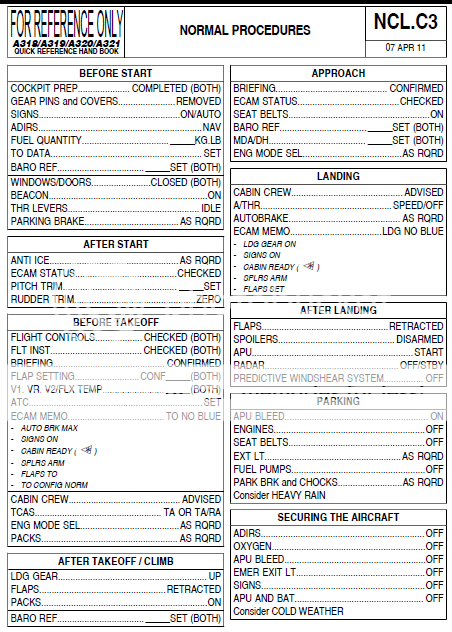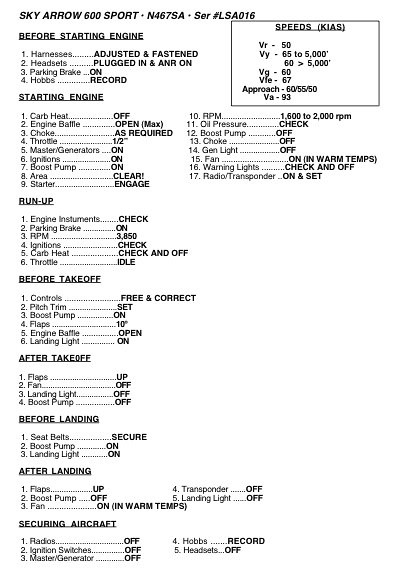bgdriveway
Pre-takeoff checklist
Why do people like making such busy, complicated check lists for small airplanes? When I was flying in a King Air, Normal procedures was one side of a page, two columns. Emergency was the other side, two columns.
Get in a Warrior or Skyhawk, your talking 15 pages to find what to check before doing your run up.
Does anyone have good ones that aren't so busy? What memory aids do you use to assist with flows or a memorized checklist such as GUMPS or the like? What are the things that will kill you or get you in a world of hurt that you check and double check?
Get in a Warrior or Skyhawk, your talking 15 pages to find what to check before doing your run up.
Does anyone have good ones that aren't so busy? What memory aids do you use to assist with flows or a memorized checklist such as GUMPS or the like? What are the things that will kill you or get you in a world of hurt that you check and double check?






